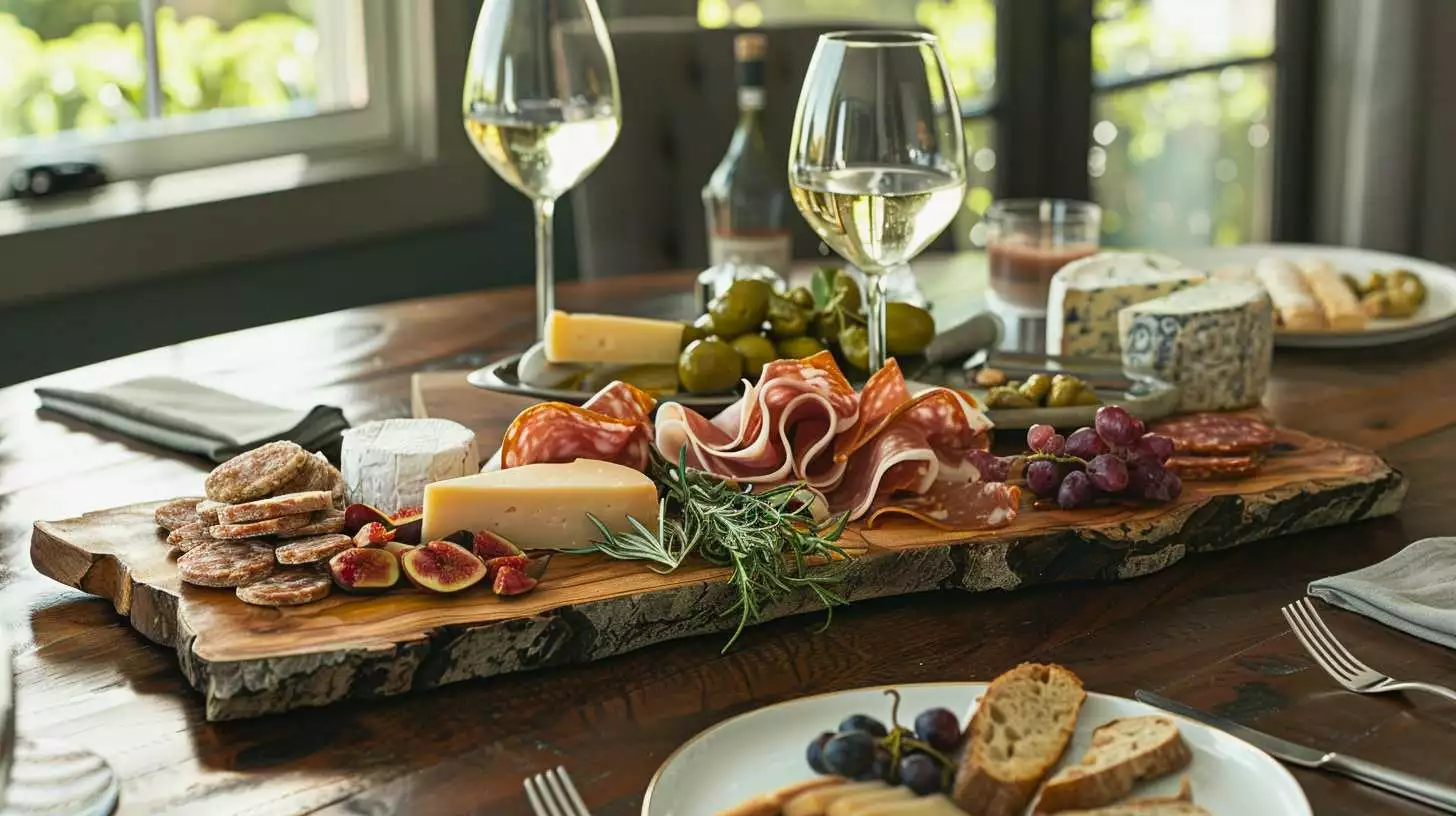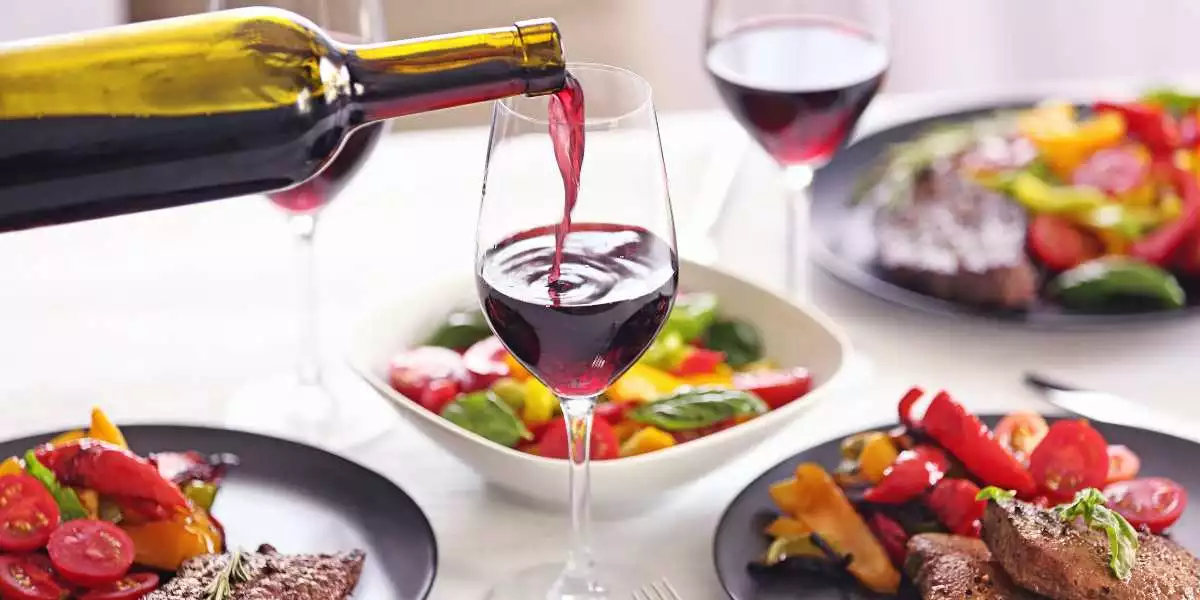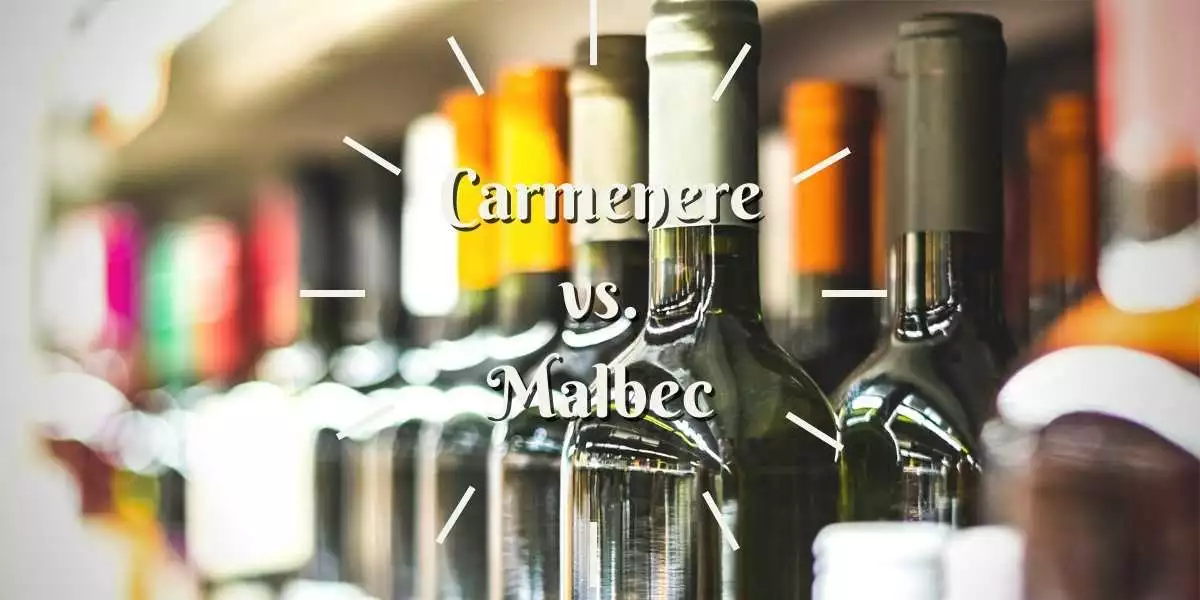Cuvée vs. Brut – Which is better? Wine Thoughts
Sparkling wine is often a must for special occasions. Instead, you look for the perfect bottle to celebrate. However, it can be challenging to understand all the terms used to describe bubbly. What is the difference between Cuvée and Brut?
Cuvée or Brut can be used to describe wine’s characteristics and styles. These terms are most commonly used to describe sparkling wines. Cuvée is a general term that conveys a particular grape’s quality or use. For example, Brut refers to the classification of sweetness levels that identify wine as sweet or dry.
Cuvée vs. Brut originated in France, but it has been used worldwide.
Wine terminology can be ambiguous; we are here to help.
What does Cuvée tell you about wine?
Cuvée is a French term that means tank. It can tell you many things about a bottle of wine. It can be used to make sparkling or still wine. This is where we’ll start our analysis of Cuvée vs. Brut.
Wine producers often use it to market their wines as being of higher quality than other varieties. Although this may give you an indication that the wine could be great, it is not regulated. Cuvée will not necessarily mean that you are buying a premium product.
Cuvée can indicate that the wine was made with a particular blend of grapes. This applies to both sparkling and still wines.
It is found on single-varietal wines and indicates that the wine was selected from specific barrels or vats. Sometimes, vintners handpick wine portions that they consider exceptional.
Cuvée is a designation that Champagne and other sparkling wine producers used to indicate which juice was used. First, winemakers can extract the best juice from Cuvée wines by gently pressing the grapes and separating any juice that runs off. This is done in either the Methode Champenoise or the traditional Champagne method.
What does Brut on a Wine Label mean?
Brut is French for dry, raw, or unrefined. It’s used to describe the natural state of Brut wines.
It’s a way of determining how sweet the wine is. Brut wines have no sweetness perception and are therefore dry.
Brut is the most popular term for dry sparkling wines, but there are also two types: Extra Brut and Brut Nature. You will not be able to distinguish the differences unless you have a very sensitive palate.
Don’t let the labels fool your eyes; dry wines can be slightly sweeter than Brut.
What are the Sweetness Classification Levels
A wine label can contain a multitude of terms that describe how the wine was made and how it tastes. Sparkling wines are no exception; that is where Cuvée vs. Brut enters.
The sweetness of sparkling wines is one of its most distinctive characteristics. People have a lot of opinions about what they prefer. There is a style for everyone. So how can you tell which bottle is which?
This was solved by producers who created terms that range from not sweet (not at all) to sweet (syrupy sweet); Brut Nature and Extra Brut are the sweetest.
The amount of residual sugar in the coke can be used to separate them. You can see the difference by comparing coke’s 120g per liter. You could also count Hersey’s kisses, which contain 2.5 grams of sugar (and 22 calories)–remember that wine sugar is not concentrated in a bite.
For Champagne wines, the dosage step (liqueur d’expedition) determines the sweetness. Sparkling wine is naturally acidic. To balance it, producers add grape must or glucose to the wine.
Perhaps you are watching what you eat. Maybe you have strong preferences for sugary flavors. You can choose the sparkling wine you like by understanding the terms used to classify it.
Levels from sourest to sweetest wine
Brut Nature (also known as Brut Zero) is the driest sparkling wine that doesn’t go through the dosage process and is made without sugar.
Top Tip: They will taste dry and contain zero to three grams of residual sugar per liter. This means that a five-ounce serving contains 91 to 93 calories.
Extra Brut, which contains zero to six grams of residual sweetness per liter, is next in line. This increases your calorie intake from 91 to 96 calories per 5-ounce serving.
Brut sparkling wines have the highest production. These are the most common type of sparkling wine. However, you won’t be able to taste sweetness, even though it is third on the list.
A five-ounce glass of Brut sparkling wine with zero to twelve grams of residual sugar per liter will set you back between 91 and 98 calories.
Extra Dry or Extra sec sparkling wine is slightly sweeter and contains twelve to seventeen residual sugar per bottle.
Extra Dry contains between 98 to 101 calories per 5-ounce serving.
The name of dry sparkling wines will deceive you. Sec, also known as Secco, is sweetened with 17 to 32 grams of residual sugar. This leaves you with between 101 and 11 calories per 5-ounce serving.
All styles, Dry and Sweet, must go through the dosage stage during winemaking.
Demi-Sec sparkling wines will be noticeably sweet but not overwhelming. The five-ounce glass contains between 32 and 50 grams of residual sugar, making it 111 to 121 calories.
Doux is the sweetest sparkling wine. Doux bottles are rare because consumers tend to prefer dry wines.
This wine is high in saccharine, contains fifty grams or more of sugar per liter, and has a total of 121 calories per serving.
Names of Sparkling Wines
We all know that sparkling wine is any wine with bubbles, regardless of its origin. However, many terms and subcategories can be helpful.
Champagne sparkling wines are the only wine that can legally be called Champagne. They have their own production and growing rules. In particular, they must be made using the traditional method.
Prosecco, Italy’s sparkling wine, is Prosecco. It’s mainly found in the Veneto area. Spain’s sparkling wine Cava is its name.
You should also be aware of other terms for sparkling wines
Blanc de Blanc is a sparkling wine made only with white grapes, composed entirely of Chardonnay.
Blanc de Noir explains that the wine is only made with red grapes. To prevent red skin from staining white juice, winemakers extract the juice from the skins using minimal contact.
Non-Vintage, or NV sparkling wine, is made by blending grapes of more than one harvest (more than one year). Champagne wines are almost all non-vintage.
Vintage wines are sparkling wines that were made from grapes that were harvested within a given year. The label will always include the year.
Grand Cru refers to wines that are made from the finest quality grapes.
Cremant is a type of sparkling wine with fewer bubbles. These wines are light, fruity and have a little bit of fizz.
Frizzante is a semi-sparkling or lightly sparkling wine that was first used to describe the strength of bubbles in Italian wines.
Spumante, another Italian term, refers to sparkling wine with full fizz.
Perlage, a French term that refers to bubbles, is called perlage.
Conclusion
Both Cuvée Champagne and Brut Champagne both have their place in wine. Each offers a different experience, but each one has its own distinct qualities. For example, you can choose to drink sweet or dry wines, sparkling or still wines.
Most Frequently Asked Questions
What’s the difference between Cuvée & Brut?
Both Cuvée and Brut can be used to refer to the quality characteristics of a wine. Cuvée is generally used to describe wines of exceptional quality or that are made from carefully chosen grapes. Brugh is a measure of sweetness and indicates whether the wine is sweetened or not.
Which is sweeter, Brut or Cuvée.
Cuvée is a blend of non-sparkling wine that can be made into a balanced sparkling wine. EXTRA DRY – Don’t let the name fool you. Extra Dry champagnes can be quite dry and still contain some sugar. They are sweeter than their Brut counterparts.
What is the difference between Brut Champagne and Cuvée Champagne?
Cuvée and Brut can be used to describe wine’s characteristics or styles. These terms are most commonly used to describe sparkling wines. Cuvée is a general term that conveys a particular grape’s quality or use. For example, Brut refers to the classification of sweetness levels that identify wine as sweet or dry.
What does Champagne mean by Cuvée?
There are many meanings to the French term “Cuvée”. Champagne can be defined as the best-pressed juice. Champagne, as well as other wines, is a mixture of multiple grapes or wines from carefully selected barrels or vats.
What does Cuvée mean?
Bulk wine
1: Bulk wine, especially: Wine in casks or vats that are blended to ensure consistency and marketability.
2: A blend of still wines used to make Champagne.
Cuvee or Brut can be used to describe wine’s characteristics and styles. These terms are most commonly used to describe sparkling wines. Cuvee is a general term that conveys a particular grape’s quality or use. For example, Brut refers to the classification of sweetness levels that identify wine as sweet or dry.
Cuvee vs. Brut originated in France, but it has been used worldwide.
Wine terminology can be ambiguous; we are here to help.
What does Cuvée tell you about wine?
Cuvee is a French term that means tank. It can tell you many things about a bottle of wine. It can be used to make sparkling or still wine. This is where we’ll start our analysis of Cuvee vs. Brut.
Wine producers often use it to market their wines as being of higher quality than other varieties. Although this may give you an indication that the wine could be great, it is not regulated. Cuvee will not necessarily mean that you are buying a premium product.
Cuvee can indicate that the wine was made with a particular blend of grapes. This applies to both sparkling and still wines.
It is found on single-varietal wines and indicates that the wine was selected from specific barrels or vats. Sometimes, vintners handpick wine portions that they consider exceptional.
Cuvee is a designation that Champagne and other sparkling wine producers used to indicate which juice was used. First, winemakers can extract the best juice from Cuvee wines by gently pressing the grapes and separating any juice that runs off. This is done in either the Methode Champenoise or the traditional Champagne method.
What does Brut on a Wine Label mean?
Brut is French for dry, raw, or unrefined. It’s used to describe the natural state of Brut wines.
It’s a way of determining how sweet the wine is. Brut wines have no sweetness perception and are therefore dry.
Brut is the most popular term for dry sparkling wines, but there are also two types: Extra Brut and Brut Nature. You will not be able to distinguish the differences unless you have a very sensitive palate.
Don’t let the labels fool your eyes; dry wines can be slightly sweeter than Brut.
What are the Sweetness Classification Levels
A wine label can contain a multitude of terms that describe how the wine was made and how it tastes. Sparkling wines are no exception; that is where Cuvee vs. Brut enters.
The sweetness of sparkling wines is one of its most distinctive characteristics. People have a lot of opinions about what they prefer. There is a style for everyone. So how can you tell which bottle is which?
This was solved by producers who created terms that range from not sweet (not at all) to sweet (syrupy sweet); Brut Nature and Extra Brut are the sweetest.
The amount of residual sugar in the coke can be used to separate them. You can see the difference by comparing coke’s 120g per liter. You could also count Hersey’s kisses, which contain 2.5 grams of sugar (and 22 calories)–remember that wine sugar is not concentrated in a bite.
For Champagne wines, the dosage step (liqueur d’expedition) determines the sweetness. Sparkling wine is naturally acidic. To balance it, producers add grape must or glucose to the wine.
Perhaps you are watching what you eat. Maybe you have strong preferences for sugary flavors. You can choose the sparkling wine you like by understanding the terms used to classify it.
Levels from sourest to sweetest wine
Brut Nature (also known as Brut Zero) is the driest sparkling wine that doesn’t go through the dosage process and is made without sugar.
Top Tip: They will taste dry and contain zero to three grams of residual sugar per liter. This means that a five-ounce serving contains 91 to 93 calories.
Extra Brut, which contains zero to six grams of residual sweetness per liter, is next in line. This increases your calorie intake from 91 to 96 calories per 5-ounce serving.
Brut sparkling wines have the highest production. These are the most common type of sparkling wine. However, you won’t be able to taste sweetness, even though it is third on the list.
A five-ounce glass of Brut sparkling wine with zero to twelve grams of residual sugar per liter will set you back between 91 and 98 calories.
Extra Dry or Extra sec sparkling wine is slightly sweeter and contains twelve to seventeen residual sugar per bottle.
Extra Dry contains between 98 to 101 calories per 5-ounce serving.
The name of dry sparkling wines will deceive you. Sec, also known as Secco, is sweetened with 17 to 32 grams of residual sugar. This leaves you with between 101 and 11 calories per 5-ounce serving.
All styles, Dry and Sweet, must go through the dosage stage during winemaking.
Demi-Sec sparkling wines will be noticeably sweet but not overwhelming. The five-ounce glass contains between 32 and 50 grams of residual sugar, making it 111 to 121 calories.
Doux is the sweetest sparkling wine. Doux bottles are rare because consumers tend to prefer dry wines.
This wine is high in saccharine, contains fifty grams or more of sugar per liter, and has a total of 121 calories per serving.
Names of Sparkling Wines
We all know that sparkling wine is any wine with bubbles, regardless of its origin. However, many terms and subcategories can be helpful.
Champagne sparkling wines are the only wine that can legally be called Champagne. They have their own production and growing rules. In particular, they must be made using the traditional method.
Prosecco, Italy’s sparkling wine, is Prosecco. It’s mainly found in the Veneto area. Spain’s sparkling wine Cava is its name.
You should also be aware of other terms for sparkling wines
Blanc de Blanc is a sparkling wine made only with white grapes, composed entirely of Chardonnay.
Blanc de Noir explains that the wine is only made with red grapes. To prevent red skin from staining white juice, winemakers extract the juice from the skins using minimal contact.
Non-Vintage, or NV sparkling wine, is made by blending grapes of more than one harvest (more than one year). Champagne wines are almost all non-vintage.
Vintage wines are sparkling wines that were made from grapes that were harvested within a given year. The label will always include the year.
Grand Cru refers to wines that are made from the finest quality grapes.
Cremant is a type of sparkling wine with fewer bubbles. These wines are light, fruity and have a little bit of fizz.
Frizzante is a semi-sparkling or lightly sparkling wine that was first used to describe the strength of bubbles in Italian wines.
Spumante, another Italian term, refers to sparkling wine with full fizz.
Perlage, a French term that refers to bubbles, is called perlage.
Conclusion
Both Cuvee Champagne and Brut Champagne both have their place in wine. Each offers a different experience, but each one has its own distinct qualities. For example, you can choose to drink sweet or dry wines, sparkling or still wines.
Most Frequently Asked Questions
What’s the difference between Cuvee & Brut?
Both Cuvee and Brut can be used to refer to the quality characteristics of a wine. Cuvee is generally used to describe wines of exceptional quality or that are made from carefully chosen grapes. Brugh is a measure of sweetness and indicates whether the wine is sweetened or not.
Which is sweeter, Brut or cuvee.
CUVEE is a blend of non-sparkling wine that can be made into a balanced sparkling wine. EXTRA DRY – Don’t let the name fool you. Extra Dry champagnes can be quite dry and still contain some sugar. They are sweeter than their Brut counterparts.
What is the difference between Brut Champagne and Cuvee Champagne?
Cuvee and Brut can be used to describe wine’s characteristics or styles. These terms are most commonly used to describe sparkling wines. Cuvee is a general term that conveys a particular grape’s quality or use. For example, Brut refers to the classification of sweetness levels that identify wine as sweet or dry.
What does Champagne mean by cuvee?
There are many meanings to the French term “cuvee”. Champagne can be defined as the best-pressed juice. Champagne, as well as other wines, is a mixture of multiple grapes or wines from carefully selected barrels or vats.
What does cuvee mean?
Bulk wine
1: Bulk wine, especially: Wine in casks or vats that are blended to ensure consistency and marketability.
2: A blend of still wines used to make Champagne.



